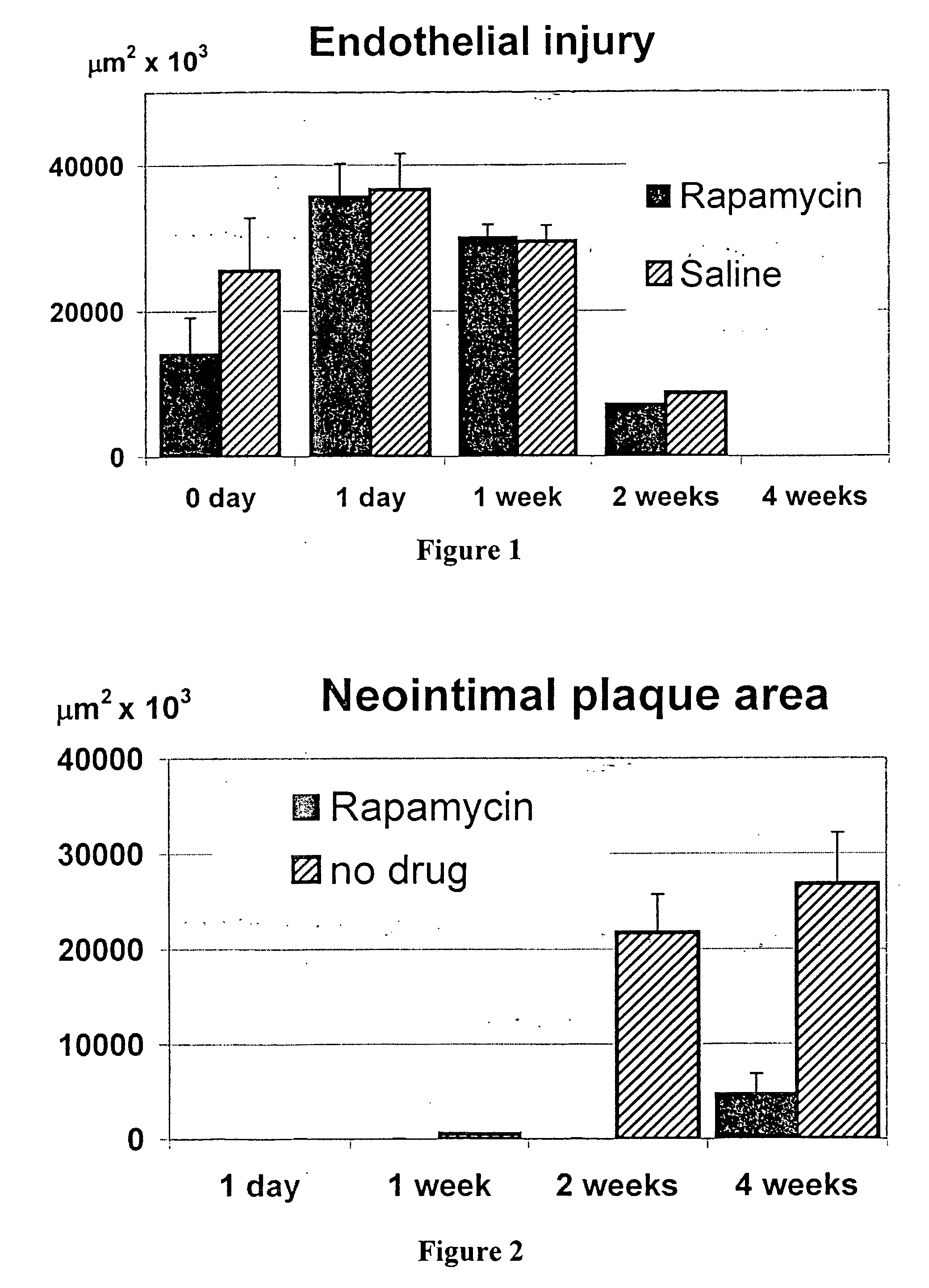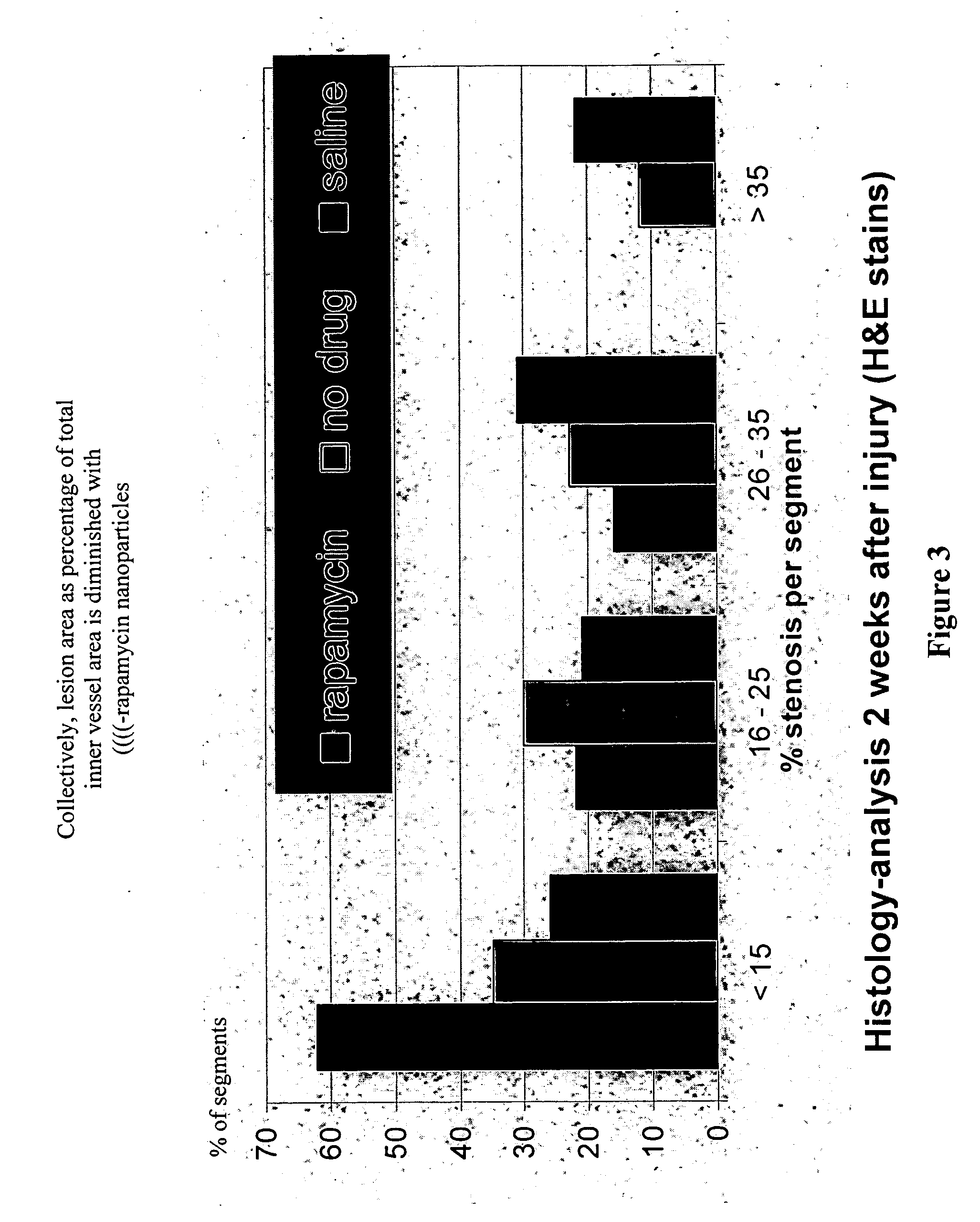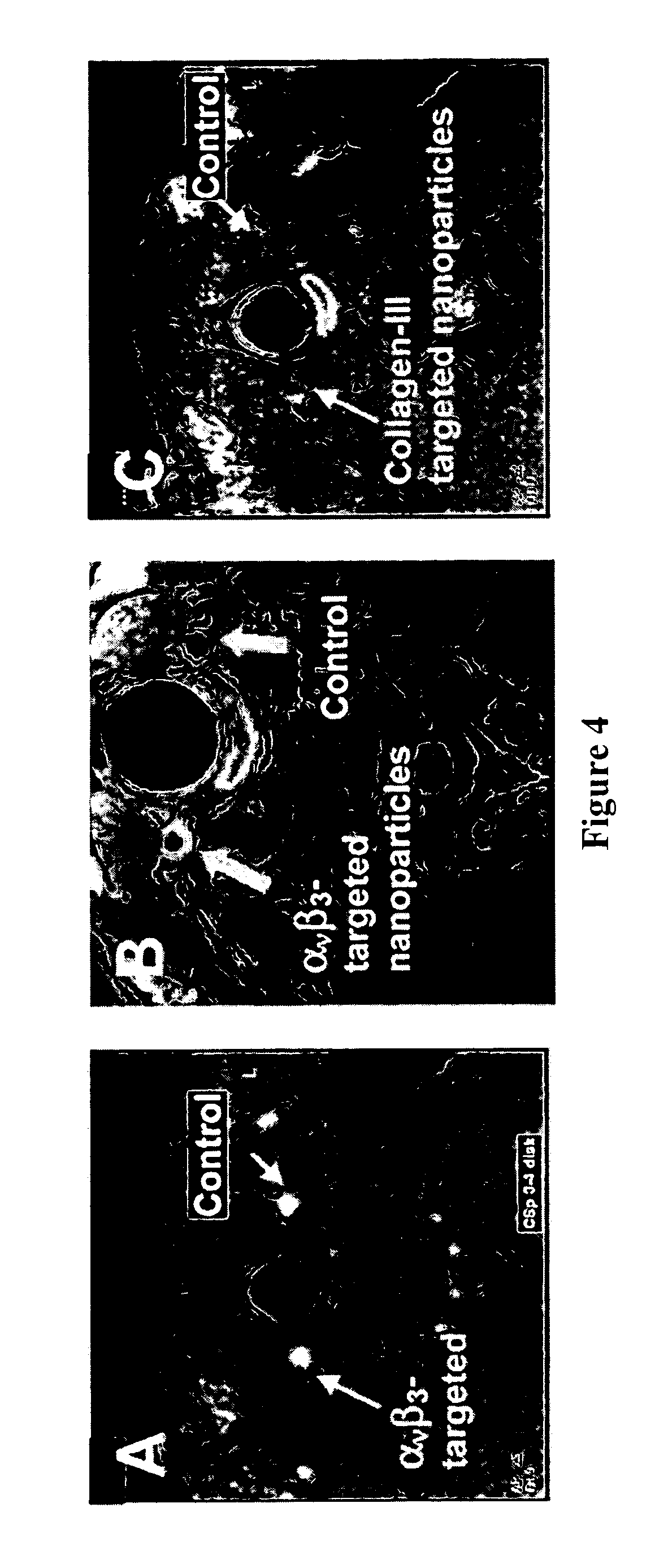Methods to ameliorate and image angioplasty-induced vascular injury
a vascular injury and angioplasty technology, applied in the field of vascular injury amelioration and image angioplasty, can solve the problems of tissue ischemia or infarction, most of the drug never reaches its intramural target, and the medical device has several significant limitations, so as to reduce the thrombosis and/or restenosis, prevent restenosis, and maximize the effect of distribution into the injured wall
- Summary
- Abstract
- Description
- Claims
- Application Information
AI Technical Summary
Benefits of technology
Problems solved by technology
Method used
Image
Examples
example 1
[0083] Rabbits were fed an atherogenic diet for three weeks, and then subjected to balloon stretch injury. A catheter was inserted from the left common carotid artery, and a double balloon expanded into each artery. From the space between the two balloons, in test rabbits, αvβ3 nanoparticles prepared as in preparation A and comprising rapamycin were administered. In a control contralateral vessel, the emulsion prepared in preparation A without rapamycin was administered.
[0084] The test and controlled arteries were imaged by MRI contrast enhancement to detect the injury pattern and the distribution of nanoparticles. Plaque development after treatment was determined by microscopic methods.
[0085] Imaging with the αvβ3 integrin-targeted paramagnetic nanoparticles showed delineation of the stretch injury pattern. Magnetic resonance imaging is performed at 1.5 T, a clinically relevant field strength, using a clinical scanner (NT Intera CV, Philips Medical Systems) and a quadrature birdc...
example 2
[0087] New Zealand White Rabbits were fed 0.25% cholesterol diet for four months which resulted in plaque formation in the femoral artery. The artery was opened using balloon angioplasty using a dual balloon catheter and dispensing 0.4 ml of αvβ3-integrin-targeted perfluorocarbon nanoparticles containing 0.3 mol % rapamycin in 12 of the rabbits, or non-targeted nanoparticles in 6 of the rabbits, or saline in 6 of the rabbits over the course of five minutes. The release of the drug was determined with dissolution studies and after 3 days more than 97% of the rapamycin was still incorporated in the nanoparticle emulsion. The emulsion also contained 99mTc label permitting detection of the local delivery of the targeted emulsion, but not the nontargeted emulsion into the femoral arteries.
[0088] Stenosis developed in balloon-injured, but untreated femoral arteries, but not in those exposed to the αvβ3-targeted perfluorocarbon nanoparticles with rapamycin A, 4 weeks after injury.
[0089] ...
example 3
[0092] Ligand-targeted paramagnetic nanoparticles were prepared as previously described. Briefly, the nanoparticles comprised 20% (volume / volume) perfluorooctylbromide (PFOB; Exfluor Research, Round Rock, Tex., USA) and 1.5% (weight / volume) of a surfactant co-mixture, 1.7% (w / v) glycerin and water for the balance. The surfactant co-mixture included 69.9 mole % lecithin (Avanti Polar Lipids, Inc., Alabaster, Ala., USA), 0.1 mole % peptidomimetic vitronectin antagonist (Bristol-Myers Squibb Medical Imaging, Billerica, Mass., USA) or anti-collagen III f(ab) (CSIRO, Victoria, Australia) coupled to MPB-PEG2000-phosphatidylethanolamine (Northern Lipids, Inc., Vancouver, British Columbia, Canada), and 30 mole % of gadolinium diethylene-triamine-pentaacetic acid-bis-oleate (Gateway Chemical Technologies, St. Louis, Mo., USA). Nontargeted, paramagnetic particles were prepared by substituting the ligand-lipid conjugate with lecithin. The nominal sizes for each formulation were measured with a...
PUM
| Property | Measurement | Unit |
|---|---|---|
| mole % | aaaaa | aaaaa |
| concentration | aaaaa | aaaaa |
| area | aaaaa | aaaaa |
Abstract
Description
Claims
Application Information
 Login to View More
Login to View More - R&D
- Intellectual Property
- Life Sciences
- Materials
- Tech Scout
- Unparalleled Data Quality
- Higher Quality Content
- 60% Fewer Hallucinations
Browse by: Latest US Patents, China's latest patents, Technical Efficacy Thesaurus, Application Domain, Technology Topic, Popular Technical Reports.
© 2025 PatSnap. All rights reserved.Legal|Privacy policy|Modern Slavery Act Transparency Statement|Sitemap|About US| Contact US: help@patsnap.com



